How To Find Out Your Website's Organic Traffic With Google Analytics
INTRODUCTION:
The first step in improving and growing your website's organic traffic is to understand how your website currently performs in search engines.
In this blog, we'll show you how to find that information and what you should be looking for. With this information, you'll have a good understanding of how your website performs organically.
Step 1: Find and Log-in to your Google Analytics Account.
The hardest step for most of you will be actually finding and logging in to your google analytics account. Unfortunately, there's no easy way of find out out who the owner of your website's analytics account is. For this, the best thing you can do is ask around the company until you find someone who might have the details.
Once you have the login details, navigate to Google Analytics and use your log-in details.
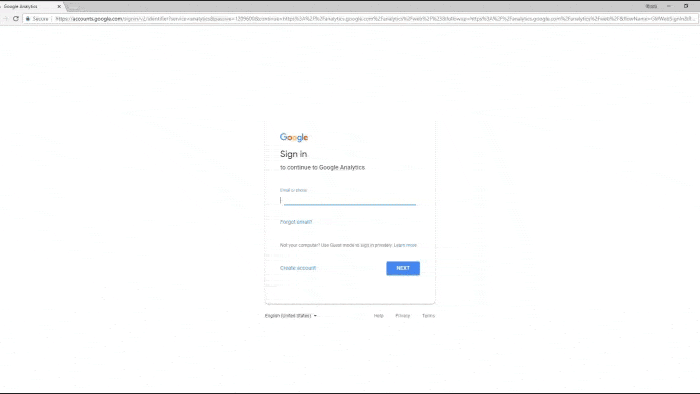
STEP 2: Find the right data
Now, before you go clicking around and having fun, you need to make sure that you're looking at the right data.
You see, your google analytics account can hold the data of many different websites and apps (like ours does for our clients). You need to make sure that you're looking at the data which actually reflects your website's data. If you're certain it is, you can skip to Step 3.
In the top left of the screen, you'll see a drop-down menu which lists your login's "accounts" which it has access to. If you're lucky, there's only one or two in there, and you'll know exactly which one to choose. Alternatively, the section is hidden for you because it's empty.
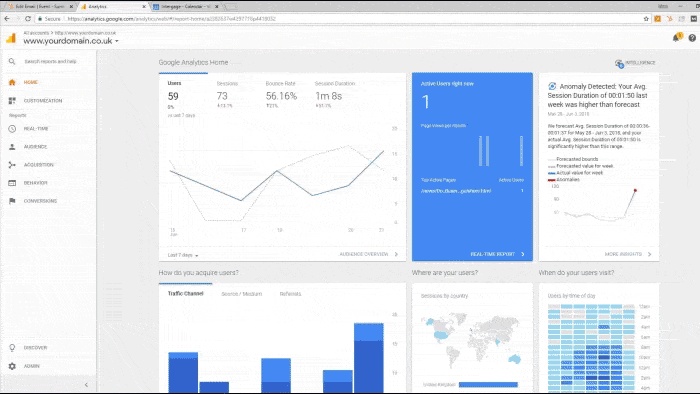
Next, you will need to choose the correct "property". If your company has multiple websites, an app or perhaps a YouTube channel, they might be under this list also. You'll want to click on the one that reflects your website.
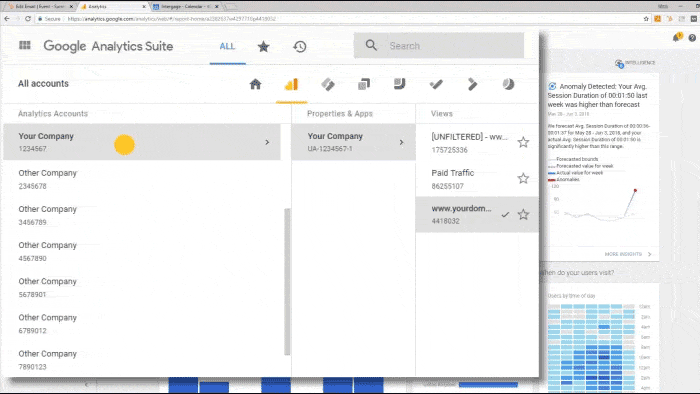
Below it is a code that begins with UA-#######
This is a part of the code that is declared on your website. This should be the same code that you find on your website by following these simple steps:
- Open your website in your preferred browser, such as Google Chrome.
- View the page source for the site. You can do this by right clicking the page and selecting "view source" or simply by pressing ctrl-U whilst on the page. This is showing you the raw code of the website.
- Hit ctrl + f (find) to find text in the source code and search for "UA-" without quotes.
- It will highlight the code on the website which starts with UA-. Now match the 7 digits after this with a property in your google analytics account.

Now you need to select the "view" of the property. This is essentially just different ways of slicing the data.
Again, there may only be one view here. However, if your analytics has been set up by a marketing professional, you may have multiple views for different uses.
In this instance, you'll want to pick the view which presents the best data, it will be named something like "filtered" or simply your website's URL.
Don't pick a view which has some specific filtering on it such as "Paid only" or "Social traffic". If you can't find a view which reflects the best data, your google analytics may not be set up properly and you may need it audited, click here to learn more about our digital marketing audits.
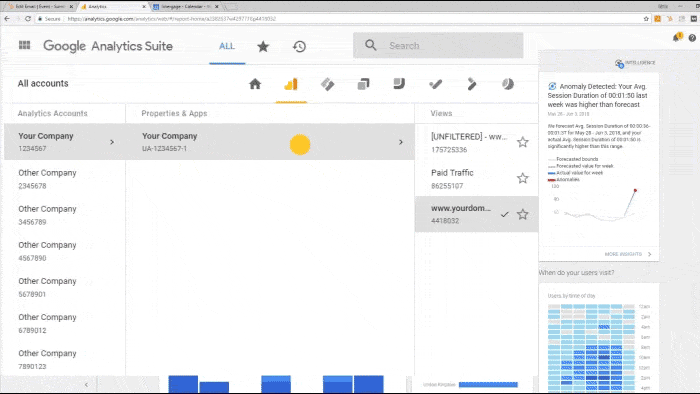
Step 3: Navigate to "Channels"
Now we're cooking! You're now looking at all of the data which flows through your website's google analytics.
Now, we want to look at your website's "organic traffic". Organic traffic is a kind of channel i.e. a channel of visitors. It's also a method by which we "acquire" traffic. For this reason, we want to navigate through Acquisition > All Traffic > Channels.
What you're seeing here is a graph of your total website traffic, and a breakdown of the channels that make up this traffic.
Here you'll see how much organic traffic you're getting and how it compares to the rest of your website's traffic channels.
Step 4: Filter by "Organic Search"
That's great and everything, and looking at the organic data in relation to every other channel is important. However, it won't give you much indication of trends, peaks and valleys.
To understand the nuances of this data, we'll need to look at this data in isolation.
To do this in google analytics is simple, just click on the "Organic Search" link in the table and you'll only see that data.
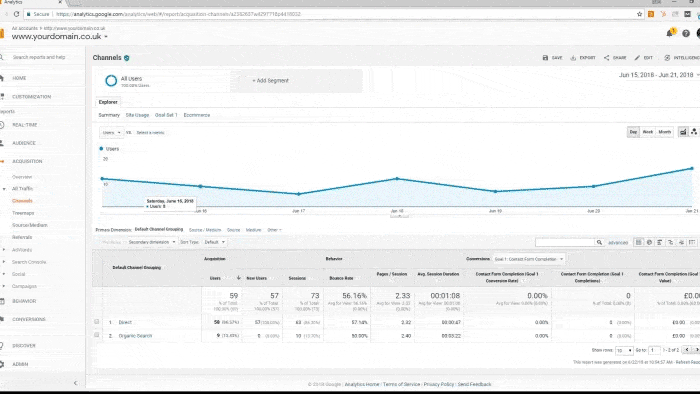
Now you're only looking at your website's organic data. You should be able to see how your website is performing organically.
However, if you're only looking at the last 7 days, you're not getting much context for the data. The next step will show you how to change the date range.
Step 5: Change the Date Range
Changing the date range on this data is important. We like to look at a trailing 12 months, it gives us an idea of what the seasonal trends are and how events may affect the website's traffic.
To do this, navigate to the top right of the screen and click on the date drop-down and adjust the dates to highlight the last 12 months.
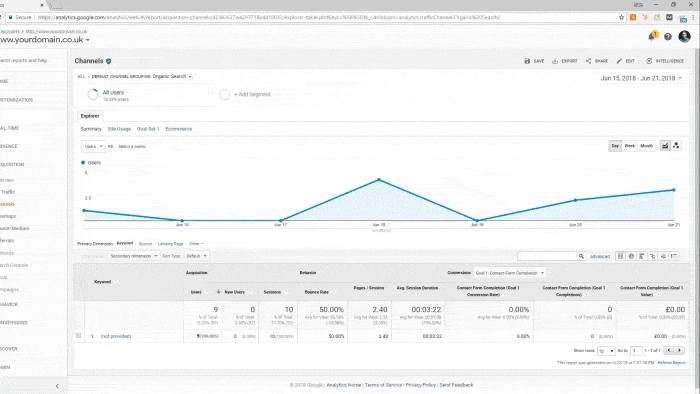
Now you can look back at the graph and trends of your website's organic traffic. You can even change the resolution from Days, Weeks, and Months for more context.
Step 6: Compare Date Ranges
To take this a little step further, why not compare this data to the year before?
Again, move up to the date selector in the top right, and check the "compare to:" box. Under the drop down, you can select to compare the data to the previous period or the previous year.
Previous period - The same length of time immediately before the selected period.
i.e. Mar 22nd 2018 - June 22nd 2018 VS Dec 19 2017 - Mar 21 2018
Previous year - The same time period only 12 months prior.
i.e Mar 22nd 2017 - June 22nd 2018 VS Mar 22nd 2017 - Jun 22nd 2017
We like to compare data year on year (previous year) for most cases. It gives us a clear difference between this year's data vs last year's data.
Hopefully you can see that it's not too difficult to get data from your google analytics and begin to get some serious insight into how your website is performing.
Next week, we'll be going through how this traffic is actually finding your website.
If you're not able to find the data you need, there could be something seriously wrong with your website tracking integration.



